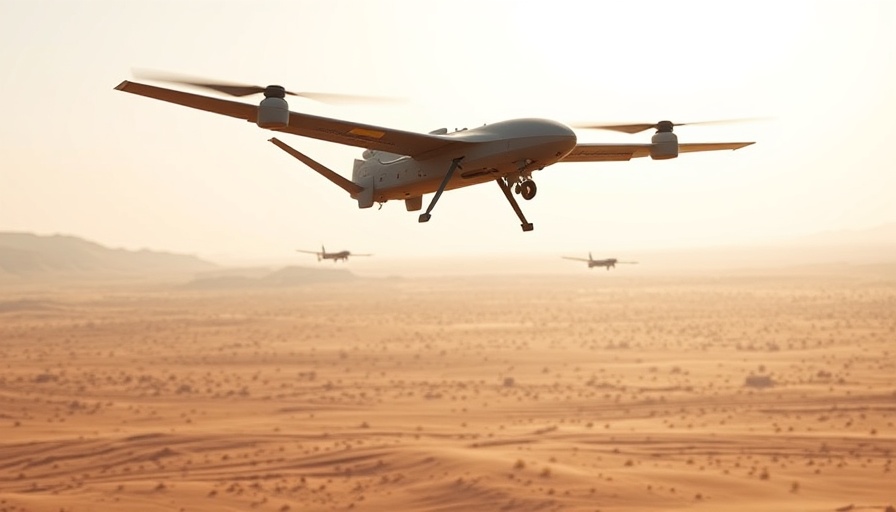
Introducing Cinder: A Game-Changer in Autonomous Warfare
The introduction of Cinder, a groundbreaking American attack drone, marks a notable milestone in military technology. This autonomous drone is designed to carry out long-range, one-way missions, promising to enhance military capabilities by efficiently targeting distant threats such as tanks. Its collaboration between Dragoon and Teledyne FLIR OEM underlines the Pentagon's shift towards low-cost, high-efficiency unmanned vehicles, especially in response to lessons learned from recent conflicts.
Adapting to Modern Warfare Challenges
Cinder's development arises from the need for more resilient military technology in today's complex battlefield environments, particularly those that suffer from intense signal jamming. Unlike traditional drones that rely heavily on GPS and a constant operator connection, Cinder is built for high autonomy. This feature allows it to operate effectively even without satellite navigation, making it versatile in challenging operational scenarios.
Lessons from the Ukraine Conflict
The project draws inspiration from the ongoing conflict in Ukraine, where inexpensive drones like the Russian Lancet have demonstrated significant impact despite their simplicity. The U.S. seeks to level this playing field by deploying drones that can strike deep into enemy territory, targeting critical assets such as air defenses, artillery, and enemy troop formations without depending on costly missile systems.
Future Predictions and Military Trends
As defense budgets tighten globally, military forces are likely to gravitate towards developing cost-efficient systems like Cinder. With a range capability of 50-300 kilometers, Cinder's design hints at a future trend in military procurement focused on quantity and operational flexibility. This shift could redefine how wars are fought, emphasizing strategic dispersion of low-cost drones instead of relying on high-cost precision strikes.
Conclusion: The Implications of Autonomous Drones
The advent of the Cinder drone represents not just a significant technological advance, but also a profound shift in military strategy. As nations continue to innovate in the realm of unmanned systems, understanding the ethical implications and the potential consequences of such weapons will be critical for future policymakers.
 Add Row
Add Row  Add
Add 




Write A Comment